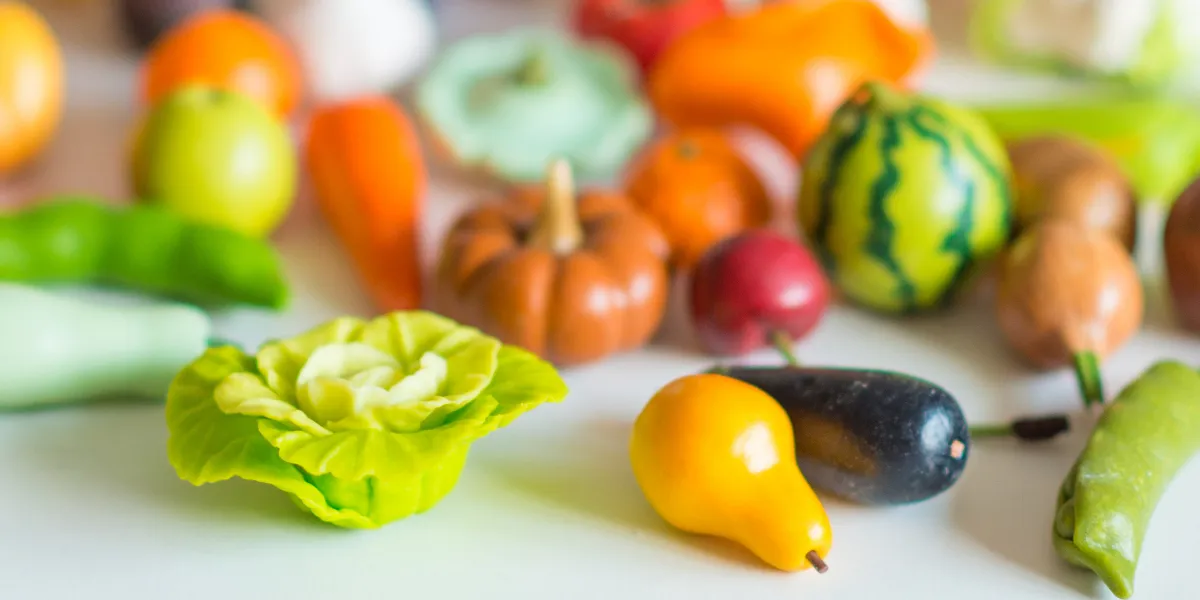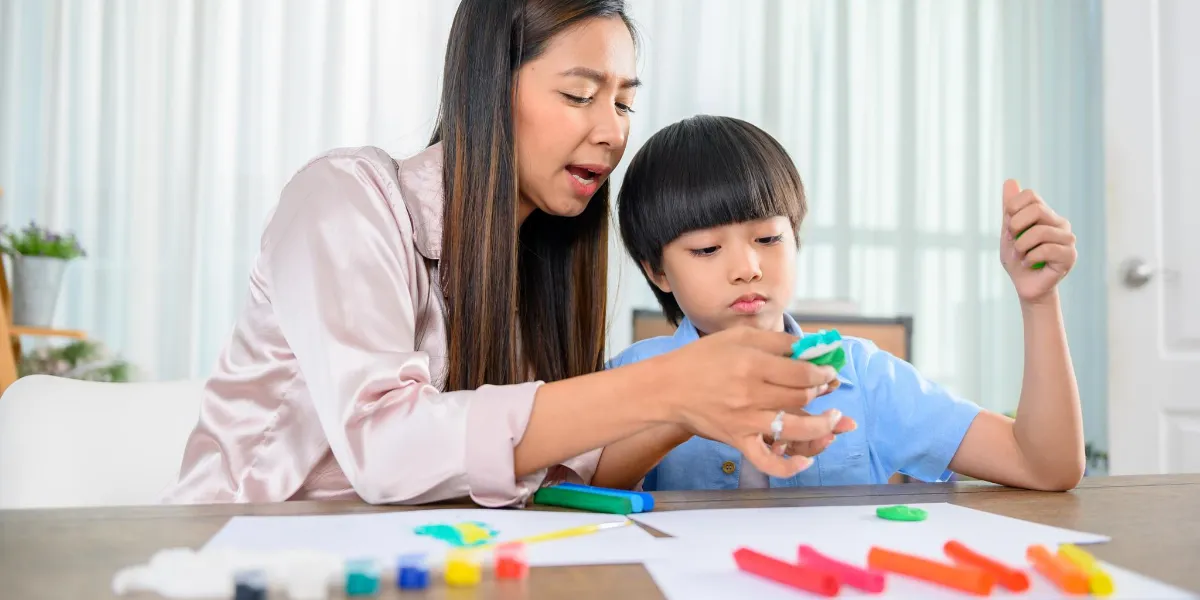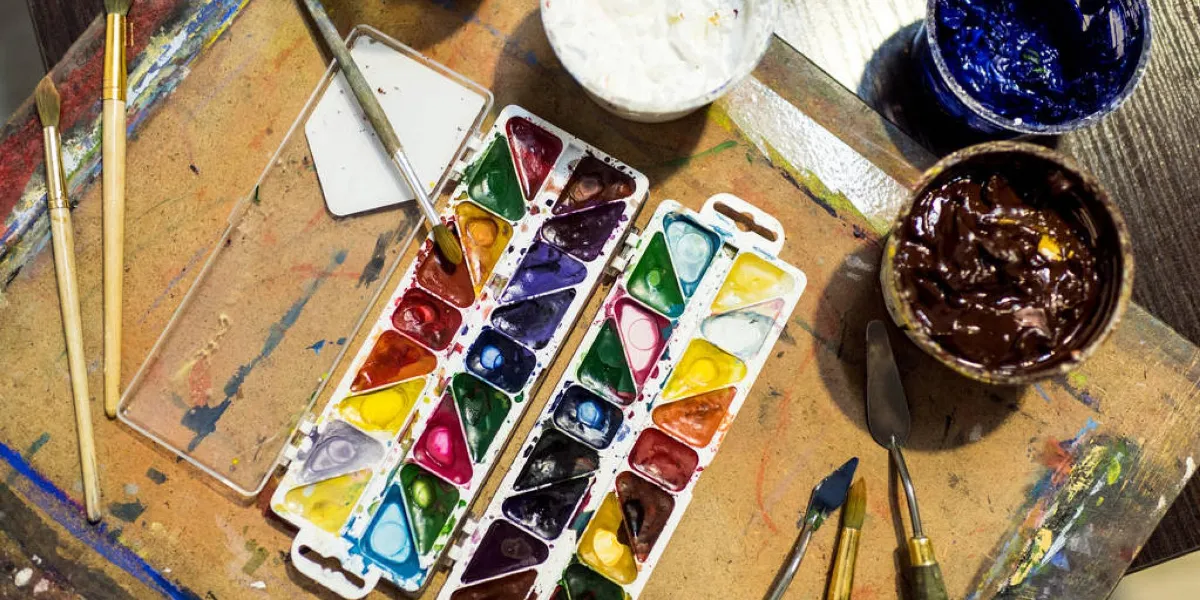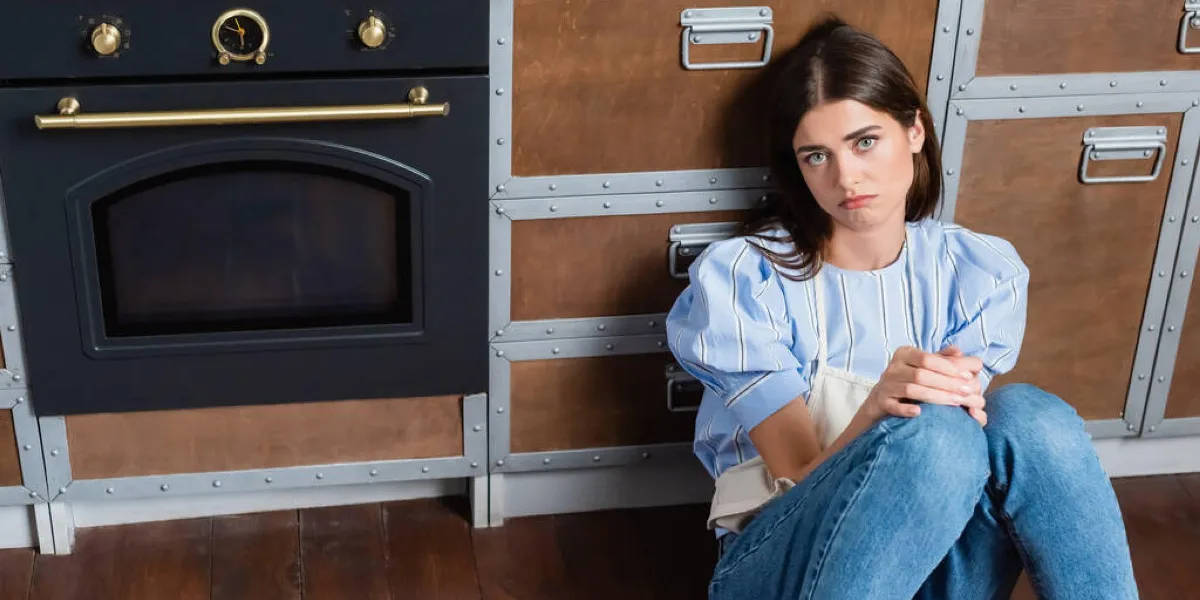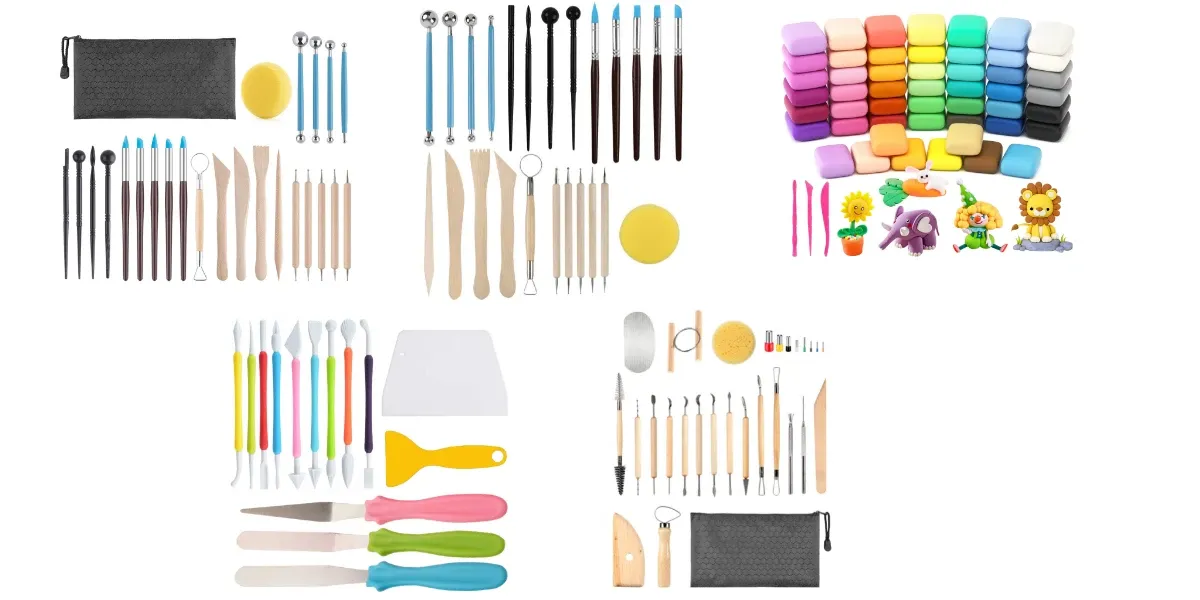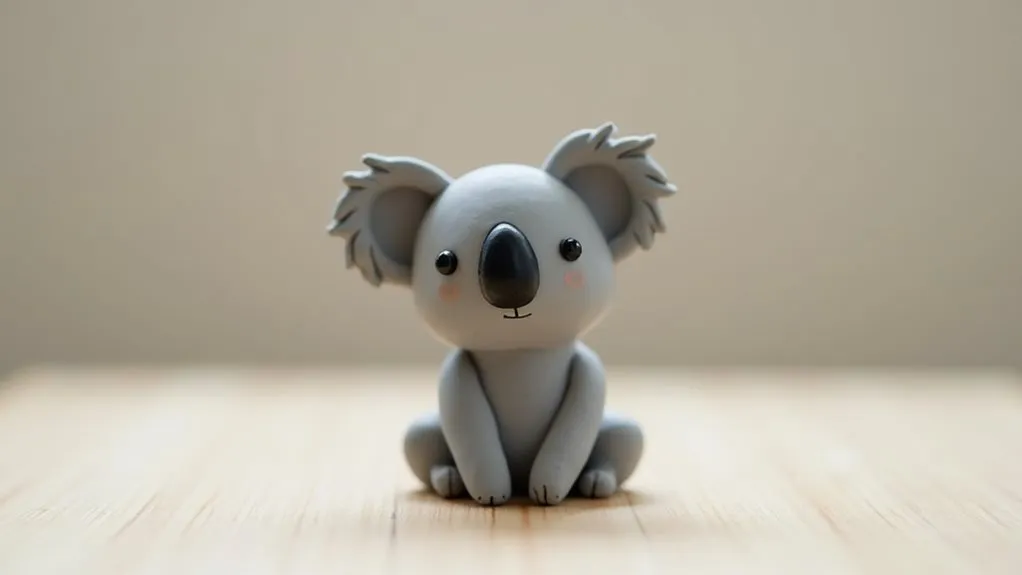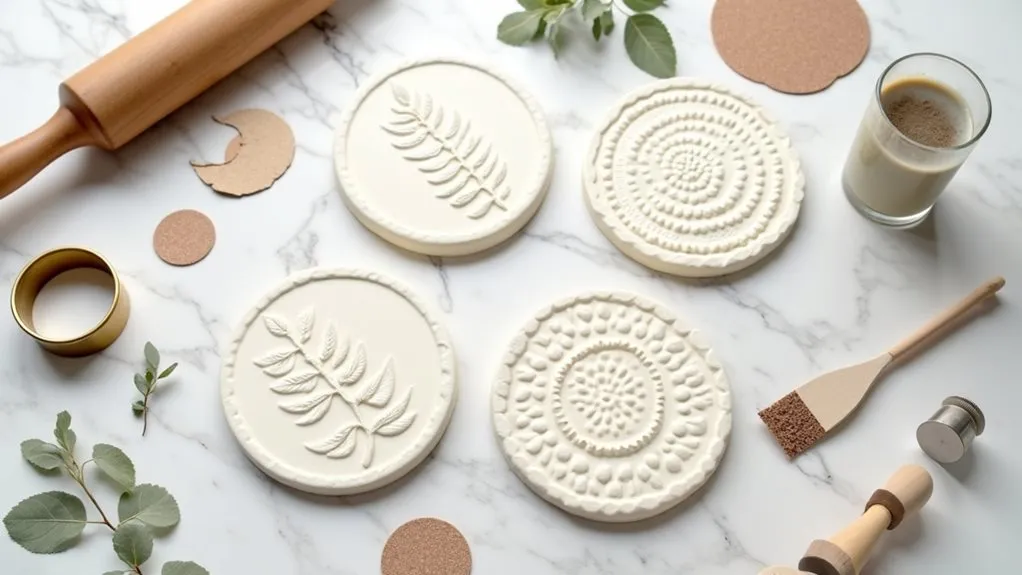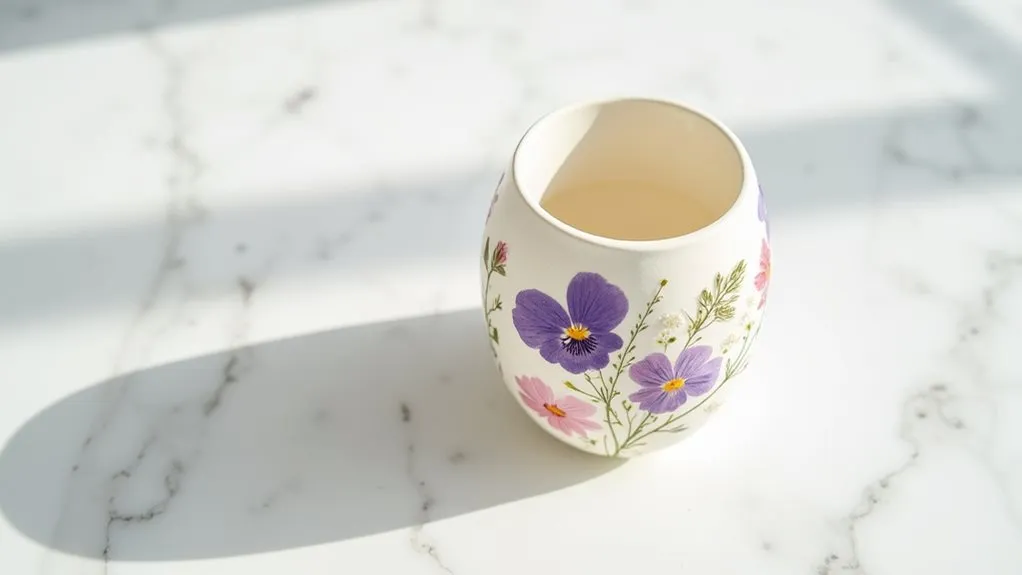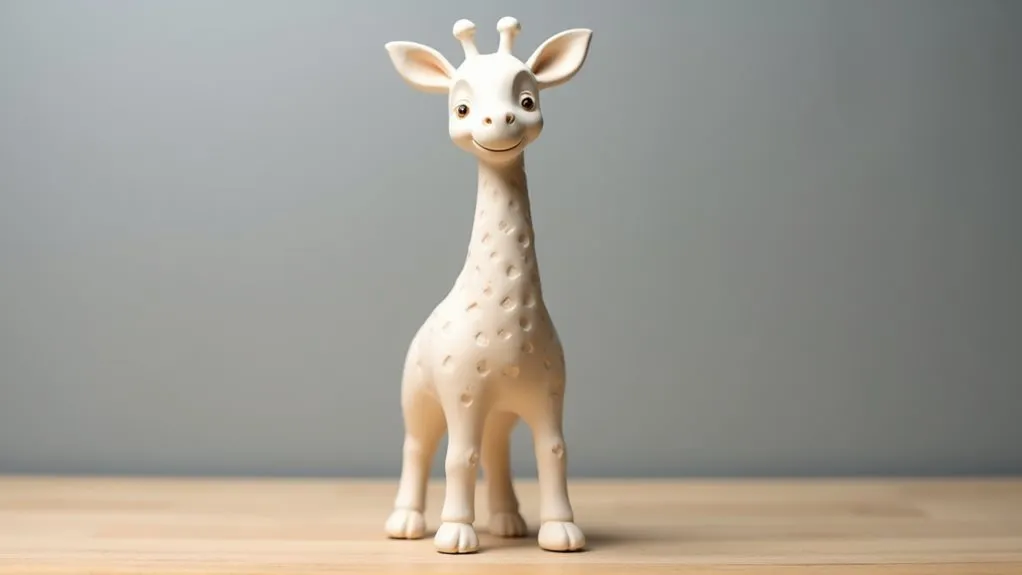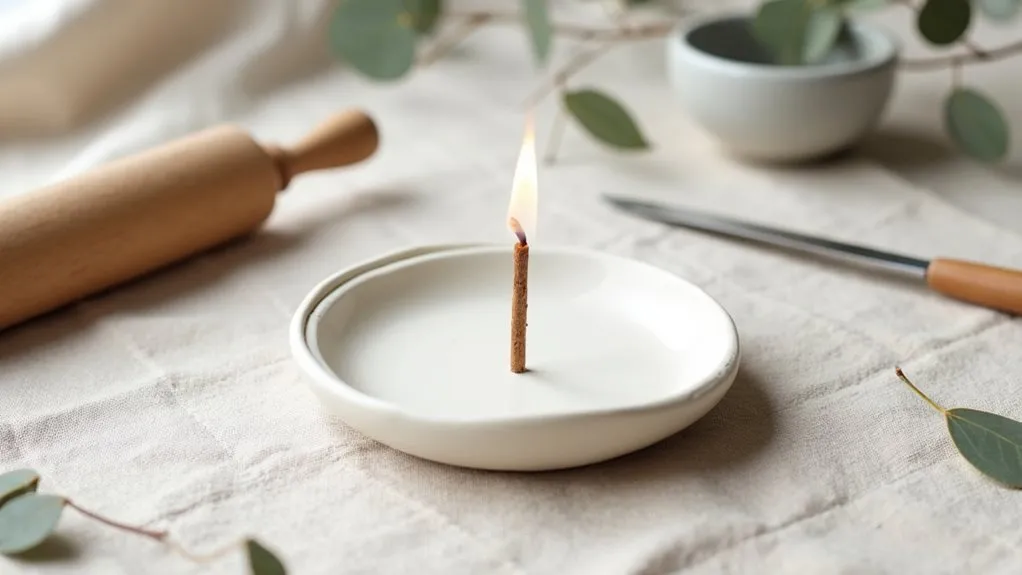Wish for art pieces that are full of color? Get ready! Let’s learn the basics of painting with polymer clay. No more waiting – let’s explore a world of color!
Five Facts About How To Color Polymer Clay:
- ✅ Polymer clay can be colored using various materials such as oil paint, acrylic paint, chalk pastels, colored pencils, and alcohol inks. (Source: The Spruce Crafts)
- ✅ The best time to add color to polymer clay is before it is baked as it may be difficult to apply color afterwards. (Source: FeltMagnet)
- ✅ Mixing different colors of polymer clay can create unique shades and color variations for more intricate designs. (Source: Polymer Clay Tutor)
- ✅ It is important to properly condition polymer clay and knead in the color to ensure even distribution of the color throughout the clay. (Source: My Modern Met)
- ✅ Experimenting with different coloring techniques and materials can lead to striking and unexpected results with polymer clay projects. (Source: Craftsy)
Importance of learning to paint and color polymer clay correctly
To make unique, professional-looking creations with polymer clay, you need to know how to paint and color it correctly.
Alcohol-based pigments like alcohol inks are strong and dry fast. Crayon shavings, mica powder, and other powder form pigments can add shimmer and metal effects. Water-based pigments like acrylic paint, food coloring, and watercolor work great for details and vibrancy.
Don’t forget to seal your masterpiece with a waterproof sealant to preserve it. With the right techniques and materials, a new world of creativity will open up to you.
Experimentation is key to learning how to color clay correctly. Try combining different pigments and techniques to get the effect you want.
Overview of methods for coloring and painting polymer clay
Color and paintfor a unique look! There are many methods. Beginners can try simple ones. Experienced artists can have a go at advanced techniques.
- Hand painting with acrylics, alcohol inks or oil paints; or
- Mixing clay with colored powders or pastels.
Sealing the clay is key to preserve the color and protect the surface. A clear acrylic spray or varnish works well and gives a glossy finish.
Get creative and experiment with different colors and techniques. Find the style that’s yours!
How to Color Polymer Clay
Wanna add some zing to your projects? This article will show you how to do just that! We’ll provide helpful tips and tricks to help you make your projects stand out. Now you can create one-of-a-kind, vibrant pieces.
Use of alcohol-based colors
Alcohol-based colors are a hot pick for coloring polymer clay. They boast vibrant pigments and dry fast. In contrast to water-based colors, they won’t add too much moisture to the clay, which could make it go soft or even dissolve. Also, they offer better adhesion and let you layer for greater color depth.
If you use these colors, remember to:
- Work in a well-ventilated spot.
- Wear protective gloves, as they can cause skin irritation.
- Keep them away from heat sources as they are flammable.
To employ alcohol-based colors on polymer clay, put a bit of it on a paintbrush or cotton swab and apply it to the clay. It’ll dry fast, so you can carry on with your project straight away.
Pro tip: Start off with a small amount of color and build it up to avoid over-saturation.
Types of alcohol-based colors
Alcohol-based colors can be used to color polymer clay when crafting. They are great as they dry quickly, blend easily and work on other surfaces.
Dye-based colors look vibrant and intense, but may fade over time.
Pigment-based colors are less bright, but last longer.
When selecting alcohol-based colors, factor in the project and desired outcome. Experimenting with different types and brands of alcohol-based colors is also helpful to figure out personal preferences. Mixing, tinting and layering alcohol-based colors can create unique effects.
A tip: Before coloring polymer clay with alcohol-based colors, condition the clay to avoid cracking or unevenness. Be cautious when handling alcohol-based colors, as they are highly flammable and should only be used in well-ventilated areas.
Proper coloring process with alcohol-based colors
For vibrant and long-lasting colors using alcohol-based colors is key. These colors are created to penetrate the clay’s porous surface and make the colors deep and even.
Tips for coloring the clay:
- Have a clean, smooth surface free from dust and debris.
- Shake the alcohol-based color bottles first.
- Use a paintbrush or sponge for the colors – start with light and build up to dark.
- Dry the colors before baking the clay in a preheated oven.
- After it’s baked, apply a final layer of alcohol-based color to seal the colors and prevent fading.
These steps can help you get stunning and long-lasting colors. Plus, try out different color combinations and techniques to make unique designs!
Importance of letting alcohol evaporate before baking
Alcohol is a must-evaporate before baking polymer clay! It affects the colour and texture of the final product. It’s used to clean or smooth out clay, but if not evaporated, can cause blistering or darkening.
For evaporation, give 24 hours. If in a rush, use a hair dryer – but don’t overheat, or it will crack or burn.
For best results, be patient and let the alcohol do its thing before baking – this ensures a perfect project! To avoid any surprises, test a small piece with alcohol first – then make adjustments for bigger projects.
Use of colors in powder form
Add a special, beautiful touch to your polymer clay designs with colors in powder form! It can be subtle or bold, depending on how much powder you use and how you apply it. Plus, you can mix the colors together to make new shades, or use them separately for a more precise look.
To use powder form, sprinkle a tiny bit onto the clay’s surface. Spread it with a soft brush, sponge, or your fingertips. Be gentle, and gradually build up the color, to prevent it from becoming too strong in one spot or mixing unevenly with the clay.
There are many brands and types of powder form available. Examples include mica powder, mineral eye shadow, and chalk pastels. Choose one that works with polymer clay, and follow the manufacturer’s instructions for the best results.
Pro tip: Try different colors and application techniques to create interesting and amazing polymer clay pieces.
Using crayon shavings for coloring
Crayon shavings are a simple and cost-effective way to add some color to your polymer clay projects. The wax melts when heated, giving your creations a glossy finish.
To use the shavings, get some different colored crayons and sharpen them. Sprinkle the shavings onto your clay before baking and then melt the wax with a heat gun or oven. The result is a vibrant and durable design that won’t fade. This is perfect for kids’ crafts, as it’s non-toxic and safe.
Pro tip: Mix different colors and thicknesses of shavings to make personalized designs.
Using color pigments for coloring
Color pigments are great for coloring polymer clay! There are plenty of pigments on the market. They come in powder, liquid and gel forms. You can mix them with clay or apply on the surface. Pigments offer more control over color intensity and blending. Create custom colors and mixtures unique to your project. Plus, they are long-lasting and resistant to fading.
When storing, use airtight containers to prevent moisture and dust. Label the pigments with color and type.
In conclusion, pigments are a versatile and effective way to add color to clay pieces. Pro tip: Practice mixing pigments to create your own color palette.
Advantages of using powder colors
Powder colors offer some unique benefits when using polymer clay. They provide a wider range of colors than other colorants, and are highly pigmented. This means you will use less product to achieve the desired shade, saving money in the long run!
Powders also have a longer shelf life. Plus, they mix well with other colors to create unique hues. You can apply them in a variety of ways too, like mixing into the clay, brushing on, or airbrushing. That’s why many polymer clay artists prefer powder colors.
Pro Tip: Be careful not to use too much powder color; apply it sparingly and gradually.
Using acrylic and other water-based colors
Adding vibrancy and depth to polymer clay projects? Acrylic and water-based colors are great for this! But before you buy, here’s what to consider:
- Make sure the colors are compatible with polymer clay. Not all paints and pigments will stick to clay, so use those specifically made for it.
- Consider opacity. Opaque colors work best for solid coverage, while transparent ones can add dimension and depth.
- Permanent? Choose lightfast and waterproof colors that won’t fade or break down over time.
Pro Tip: Test your colors on a small bit of clay before committing to a bigger project.
Proper process for coloring with water-based colors
Coloring polymer clay with water-based colors can be tricky. But, follow the right steps and you’ll get bold, lasting colors even when it’s exposed to water. Here’s what to do:
- Use colors made specially for polymer clay.
- Let your clay piece dry completely before coloring.
- Apply a thin sealant layer to the clay, covering all areas that will be colored. This helps the colors stick and stops smudging or smearing.
- Let the sealant dry then add the color.
- Use a brush or sponge to apply the color in thin layers and let each layer dry.
- When you’re happy with the color intensity, seal it with another layer of sealant to protect it from water and other elements.
Tip: Have fun with colors and techniques to make your piece unique!
Challenges of using water-based colors
Using water-based colors in your polymer clay projects can be tricky. They spread and become muddy when mixed with water, ruining the quality.
To get it right, use good tools and techniques. High-quality water-based colors specifically designed for polymer clay are best. They’re more vibrant and long-lasting than regular watercolors.
Mix your colors thoroughly and apply them in thin layers to avoid a blotchy or muddy finish. Use a gentle touch when applying.
Pro tip: Before applying water-based colors to your polymer clay, test them on a scrap piece of clay. Make sure the color is the right shade and consistency for your project.
Is it possible to add color to white polymer clay prior to baking?
Yes, you can color white polymer clay before baking it! But, you must take certain steps for the color to stay bright. Our tips and techniques will help you achieve the look you want. This guide is helpful for both beginners and pros. With it, you’ll be able to make beautiful, colorful projects with polymer clay.
- Tips for coloring white polymer clay before baking:
- Techniques for keeping colors bright and vibrant:
- Steps to creating beautiful, colorful projects with polymer clay:
Explanation of coloring white polymer clay before baking
White polymer clay is a popular material for crafting. To get a specific color or tone, you can add color before baking. There are several ways to do this. Consider powders, liquid dyes, acrylic paints, or alcohol-based markers. Each has its pros and cons. Choose the one that works best for your project.
Pro tip: Wear gloves and protect your work surface. Start with a small amount of color. Gradually add more until you reach your desired shade. Test the color on a small piece before applying it to your entire project.
Importance of avoiding water and alcohol inclusions
When coloring polymer clay, it’s essential to dodge water and alcohol inclusions. These can cause the clay to become brittle, crack, or break after baking.
Keep your work area and tools clean and dry. Don’t use liquids to clean your hands or tools. Use a dry paper towel instead.
Mix colors with powdered pigments or oil-based colorants. Avoid water-based ones, as they can cause water inclusions.
By avoiding water and alcohol inclusions, your colored polymer clay projects will turn out beautifully and last longer. Pro tip: Read package instructions before starting your project.
Pros and cons of different coloring methods for white clay
Coloring white polymer clay can give your creations a unique touch. There are 3 ways to do it:
- Using pre-colored clay. It’s easy and convenient but you’re limited to its colors.
- Painting it with paints like acrylic or oil. You get more details and colors. Though, the paint may chip or peel over time, and the finish isn’t as smooth.
- Mixing pigments or dyes before baking. This gives you control of the color, with a smooth finish. But getting the right shade can be difficult.
Know the pros and cons of each method, and decide based on your preferences. Test your chosen method on a small piece of clay before use, for desired results.
Is it possible to combine paint and polymer clay?
Do you mix paint with polymer clay? It’s a common query amongst crafty artists. They want to try something new with their colorful clay projects! We’re sharing our experience and exploring this concept. The plus points and potential problems of using paint with polymer clay can be examined.
Explanation of mixing paint into polymer clay
Coloring polymer clay? Mixing paint in can be great! But, take care. Oil-based or acrylic paint is best. Avoid water-based. Mix on a clean surface. Wax paper or a workbench is perfect. Don’t overmix. Too much paint could make the clay soft or sticky. Also, the color might fade over time.
A simple tip: experiment with different techniques and amounts of paint for unique and vibrant colors!
Proper process for mixing paint with polymer clay
Adding color to your polymer clay creations is a breeze with paint! However, it’s essential to use the right process for great results.
- Start by choosing a non-toxic, high-quality paint that’s compatible with the clay.
- Then, mix a tiny amount of paint into the clay and knead it until the color is even. Too much paint can affect the texture and strength of your clay.
- Work on a non-stick surface, like a silicone mat or wax paper, to stop it from sticking. Washing your hands also keeps dirt and oils away from your clay.
- Voila! You can easily mix paint into your polymer clay and create stunning designs.
- Go the extra mile by experimenting with different color combos and painting techniques. Have fun!
Importance of letting the clay dry before baking
Essential when working with polymer clay and coloring it with paint is drying the clay before baking. Moisture inside the clay can make the paint bubble and peel off when baked, destroying the project. Air-dry the clay until it is hard to the touch before baking. This lets the clay release any moisture left, so the paint attaches well to the surface with no issues.
When the clay is dry, slowly mix the paint into it until the colour and texture desired is reached. Adding too much paint might give the clay a sticky, soft texture. Take your time and work with small amounts of clay to avoid wasting or ruining the project.
Pro Tip: Test the colouring and baking on a tiny sample first, to avoid any unexpected results.
Is it possible to use food coloring to add color to polymer clay?
That’s a question often asked by polymer clay fans who want to liven up their projects. Readers can find out if they can use food coloring instead of craft dyes.
This could be cheaper and easier to get hold of. It’ll help them become better at polymer clay crafting.
Explanation of using food coloring for polymer clay
Add some pizzazz to your creations using food coloring for polymer clay! It’s cheap and can be found at most grocery stores. Plus, there’s a wide range of colors to choose from.
Mix a few drops of food coloring with a small amount of clay. Blend it up until you get the desired shade. If it’s too light, add more drops until the color is just right.
Be aware that some food coloring may fade, especially when exposed to sunlight or heat. To prevent this, use a UV-resistant varnish.
Pro tip: Start with a tiny bit of food coloring. Gradually add more until you get the desired color. This will help you avoid excess coloring which could make your clay too soft or sticky.
Risks of using food coloring on polymer clay
Food coloring may seem like an easy way to get the right hue for your project. But it can bring risks! Food coloring is fine for consumption but not for direct skin contact or the longevity of your polymer clay creation. It may stain skin and cause irritation or allergy. And it can fade or change color overtime, ruining the look of your clay.
So, use polymer clay dyes or pigments instead. They are designed specifically for the material and have no risks. Follow manufacturer instructions when adding color to your project for the best outcome.
Safer alternatives to coloring polymer clay
When working with polymer clay, adding color is a great way to make unique pieces. But, beware—some colorants can be hazardous. Fortunately, there are safer alternatives!
For instance, natural pigments like beetroot powder, turmeric, or cocoa powder can create rich, earthy colors. Alcohol-based dyes and oil paints formulated for polymer clay are also good options.
Be aware that food coloring isn’t a safe choice. It breaks down and fades, leaving colors dull and uneven. Plus, it may contain ingredients that could harm the clay or even you.
These safer alternatives let you make beautiful polymer clay creations without jeopardizing your health.
Pro tip: Always follow safety instructions when using colorants. Protect yourself and your artwork!
Importance of proper coloring and painting for polymer clay
Coloring and painting correctly is essential for polymer clay projects. It adds a unique, personal touch. The right techniques and tools make the artwork look better and more valuable.
For example, use a white or light colored paint first. That creates depth and dimension. Metallic or pearlescent pigments give a metallic effect. Translucent finish gives a glossy, glass-like look.
Invest in quality brushes, paints, and other materials. Experiment with colors and techniques to get the desired effect.
Pro tip: Make a color chart. That can help you remember your combinations and techniques.
Recap of best practices and methods for coloring polymer clay.
Crucial for anyone wanting to make amazing jewelry or figurines with polymer clay is to recap the best practices and methods for coloring it. This article shares key takeaways on how to get the most out of this versatile medium.
- Firstly, select high-quality clay and pigments to achieve rich, vibrant colors.
- Secondly, mix clay colors to get unique hues not available off-the-shelf.
- Thirdly, use texture or mica powders to create dazzling, light-catching effects and add dimension.
- Finally, cure the clay correctly: temperature and timing are vital to prevent discoloration or burning.
By following these best practices and methods, you can open up endless possibilities to color polymer clay and make incredible, one-of-a-kind pieces. So, go ahead and experiment with different techniques and colors to unleash your creativity!
FAQs about How To Color Polymer Clay
How do I color polymer clay?
There are several ways to color polymer clay. You can mix color into the clay, layer different colors on top of each other, add pigments or powders, or use liquid or gel mediums. The method you choose will depend on the effect you want to achieve and the type of clay you are using.
What kind of color should I use with polymer clay?
You can use any type of color with polymer clay, including acrylic paint, oil paint, alcohol ink, and pigment powders. Just make sure the color you choose is compatible with the type of clay you are using and that it will not affect the texture, flexibility, or durability of the clay.
How can I achieve a marbled effect with polymer clay?
To achieve a marbled effect, start by conditioning your base color clay and roll it into a ball. Flatten the ball into a disk, then add a small amount of the contrasting color clay on top. Fold the base color up and over the contrasting color, then roll the clay into a ball again. Continue folding and rolling until the colors are marbled evenly throughout the clay.
Can I mix different brands of polymer clay together to create a new color?
Yes, you can mix different brands of polymer clay together to create a new color. Just make sure they are the same type of clay (i.e. all are either Sculpey, Fimo, or Kato Polyclay) and that they have compatible curing temperatures and times.
How can I prevent my polymer clay from fading or yellowing?
To prevent your polymer clay from fading or yellowing, consider using a UV-resistant varnish or sealant on your finished pieces. You can also store your finished pieces out of direct sunlight and in a cool, dry place to reduce exposure to light and heat.
Can I use food coloring to color polymer clay?
No, it is not recommended to use food coloring to color polymer clay. Food coloring is water-based and can affect the texture and flexibility of the clay. Instead, use colorants that are specifically designed for use with polymer clay.

